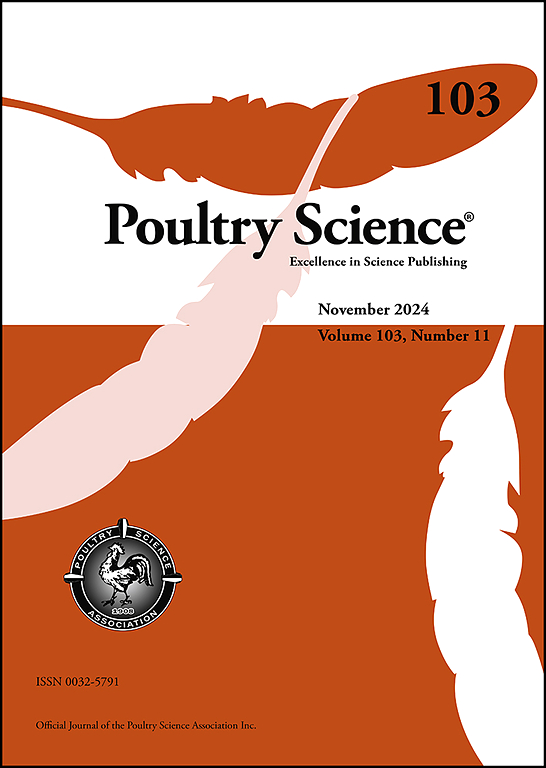Effects of phosphatidylethanolamine on intramuscular fat deposition and key gene identification by transcriptome sequencing in broiler chickens
IF 3.8
1区 农林科学
Q1 AGRICULTURE, DAIRY & ANIMAL SCIENCE
引用次数: 0
Abstract
High-intensity breeding of broilers has increased meat yield while reducing meat quality. Properly enhancing intramuscular fat (IMF) content is an effective strategy to improve chicken meat quality and boost consumer preference. Given that the role of phosphatidylethanolamine (PE) in chicken IMF metabolism remains unclear, we investigated the effects of PE on the meat quality, as well as the differentiation and gene expression regulation of chicken intramuscular adipocytes (IMAs). PE supplementation significantly increased the a* value of meat color and reduced shear force (P < 0.05); however, it did not exert a significant effect on the pH value 45 min post-slaughter (P > 0.05). After treating intramuscular adipocytes IMAs with 25, 50, and 100 µM PE, 100 µM PE supplement markedly enhanced lipid deposition and the expression of genes related to adipogenic differentiation. Differentially expressed genes (DEGs) analysis, Kyoto Encyclopedia of Genes and Genomes (KEGG) and Gene Set Enrichment Analysis (GESA) were used to identify key genes involved in PE regulation of chicken IMA deposition. A total of 1,182 DEGs were identified, with genes S1PR3, FABP4, PLIN2, APOA1, PPARG and CD36 recognized as hub genes associated with the triglycerides (TG) content of IMAs. PPAR signaling pathway, terpenoid backbone biosynthesis, cytokine-cytokine receptor interaction, and neuroactive ligand-receptor interaction pathway were significantly enriched in PE group. This study reveals the role of PE in chicken IMAs differentiation and lipid deposition, providing a theoretical foundation for further research into the impact of PE on IMF accumulation in broiler chickens.
求助全文
约1分钟内获得全文
求助全文
来源期刊

Poultry Science
农林科学-奶制品与动物科学
CiteScore
7.60
自引率
15.90%
发文量
0
审稿时长
94 days
期刊介绍:
First self-published in 1921, Poultry Science is an internationally renowned monthly journal, known as the authoritative source for a broad range of poultry information and high-caliber research. The journal plays a pivotal role in the dissemination of preeminent poultry-related knowledge across all disciplines. As of January 2020, Poultry Science will become an Open Access journal with no subscription charges, meaning authors who publish here can make their research immediately, permanently, and freely accessible worldwide while retaining copyright to their work. Papers submitted for publication after October 1, 2019 will be published as Open Access papers.
An international journal, Poultry Science publishes original papers, research notes, symposium papers, and reviews of basic science as applied to poultry. This authoritative source of poultry information is consistently ranked by ISI Impact Factor as one of the top 10 agriculture, dairy and animal science journals to deliver high-caliber research. Currently it is the highest-ranked (by Impact Factor and Eigenfactor) journal dedicated to publishing poultry research. Subject areas include breeding, genetics, education, production, management, environment, health, behavior, welfare, immunology, molecular biology, metabolism, nutrition, physiology, reproduction, processing, and products.
 求助内容:
求助内容: 应助结果提醒方式:
应助结果提醒方式:


